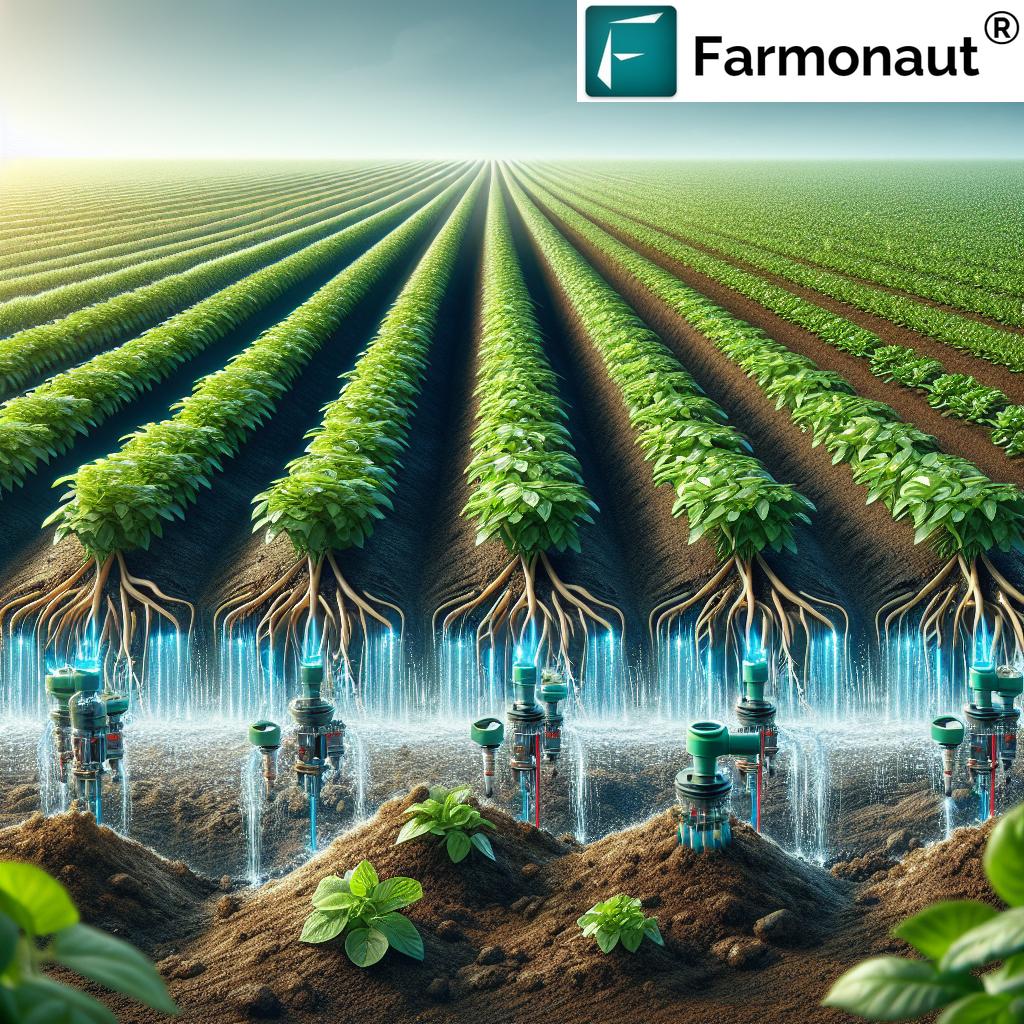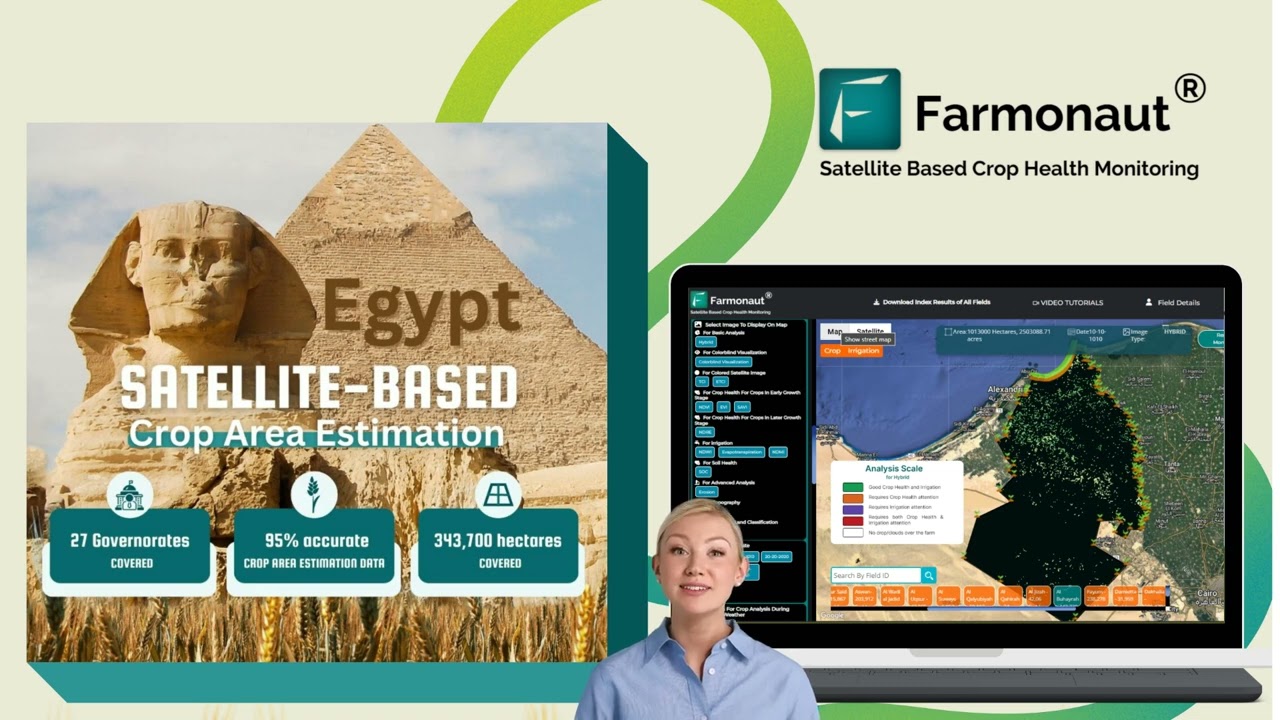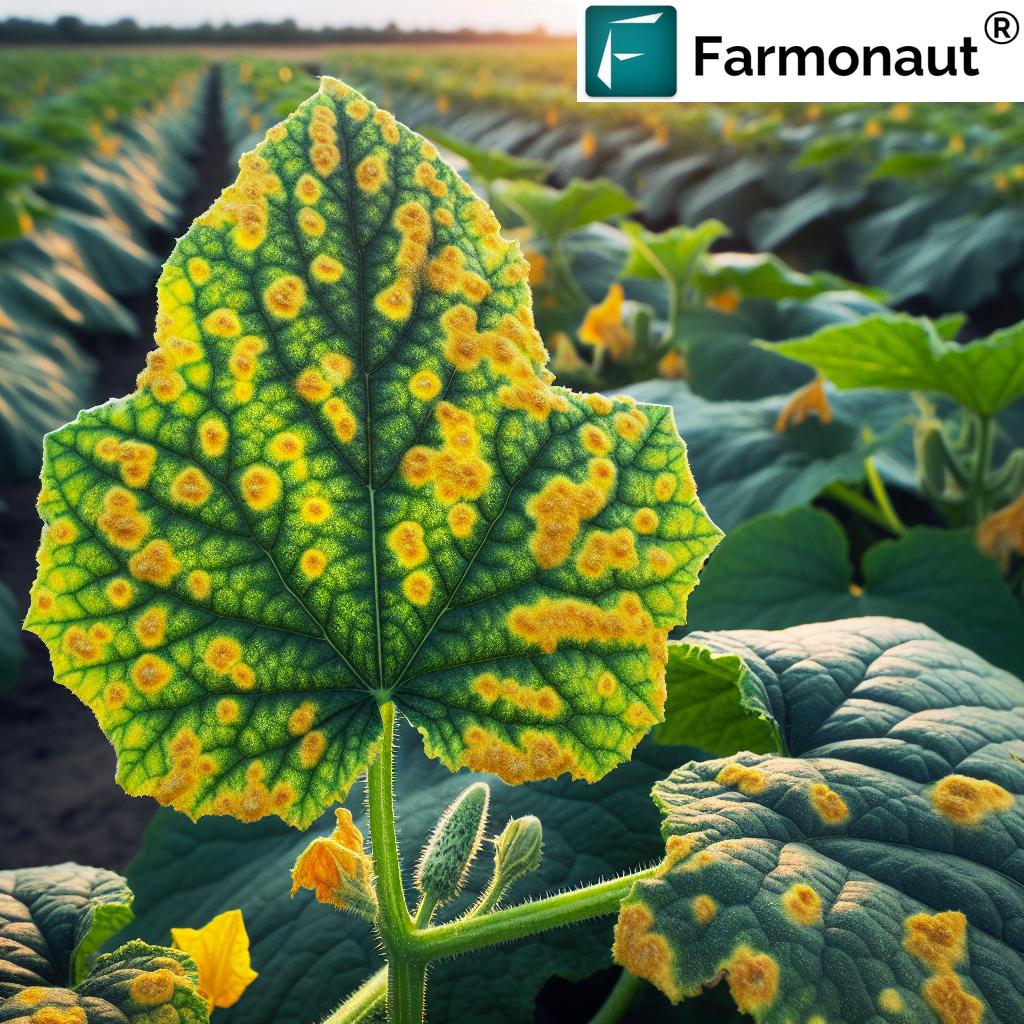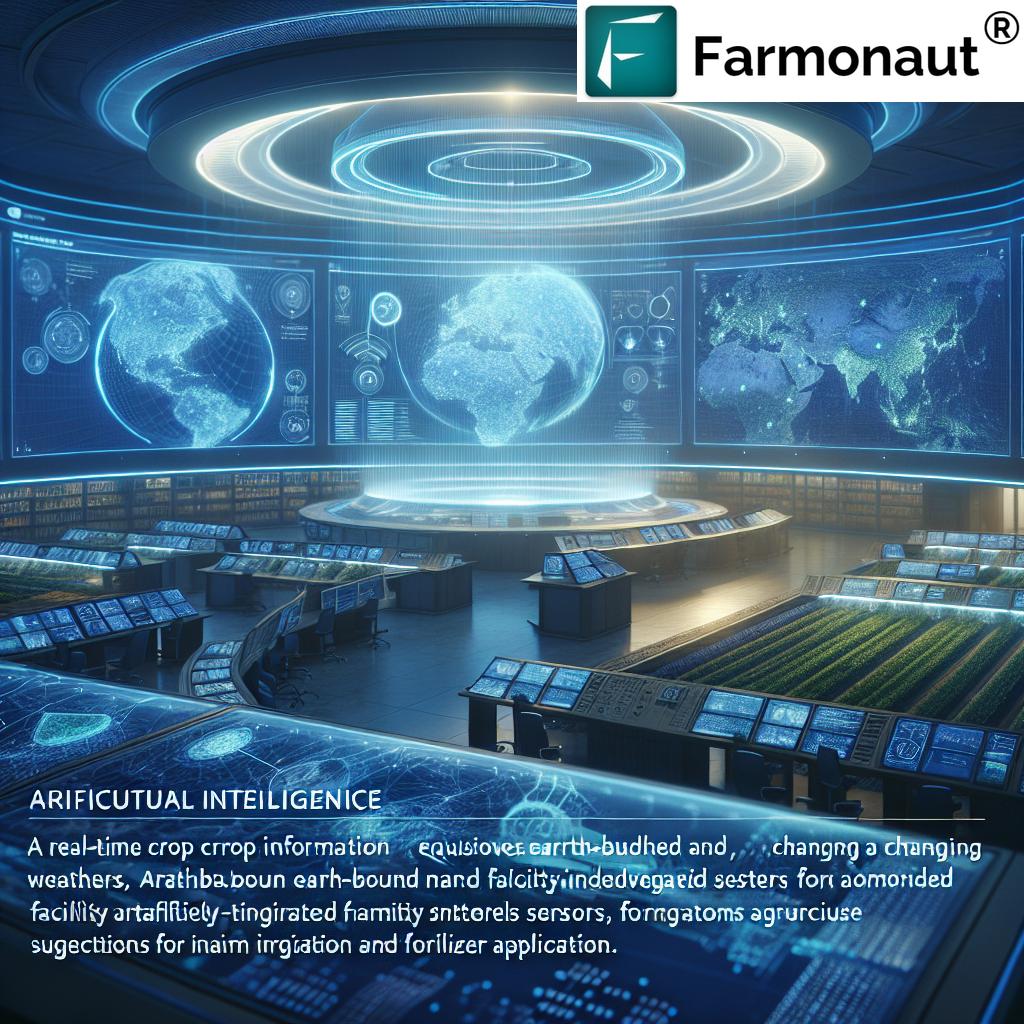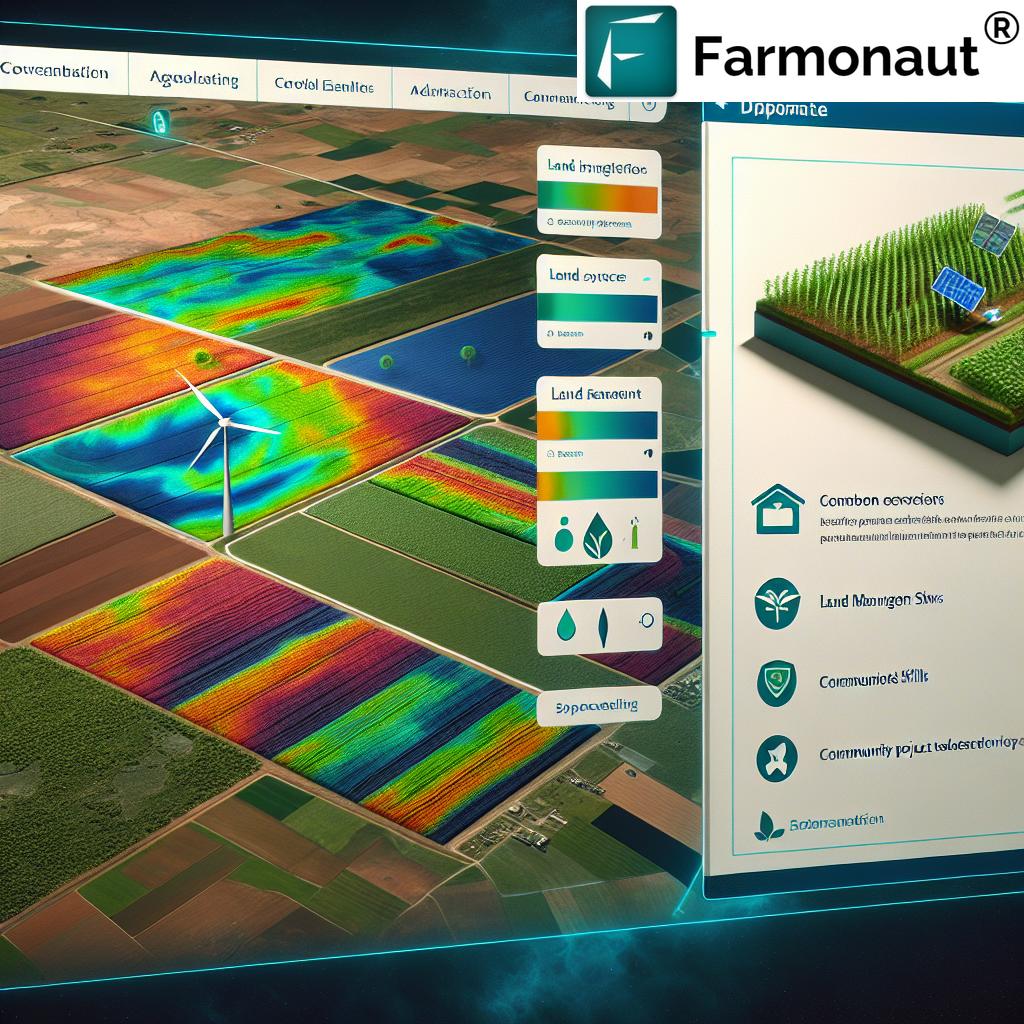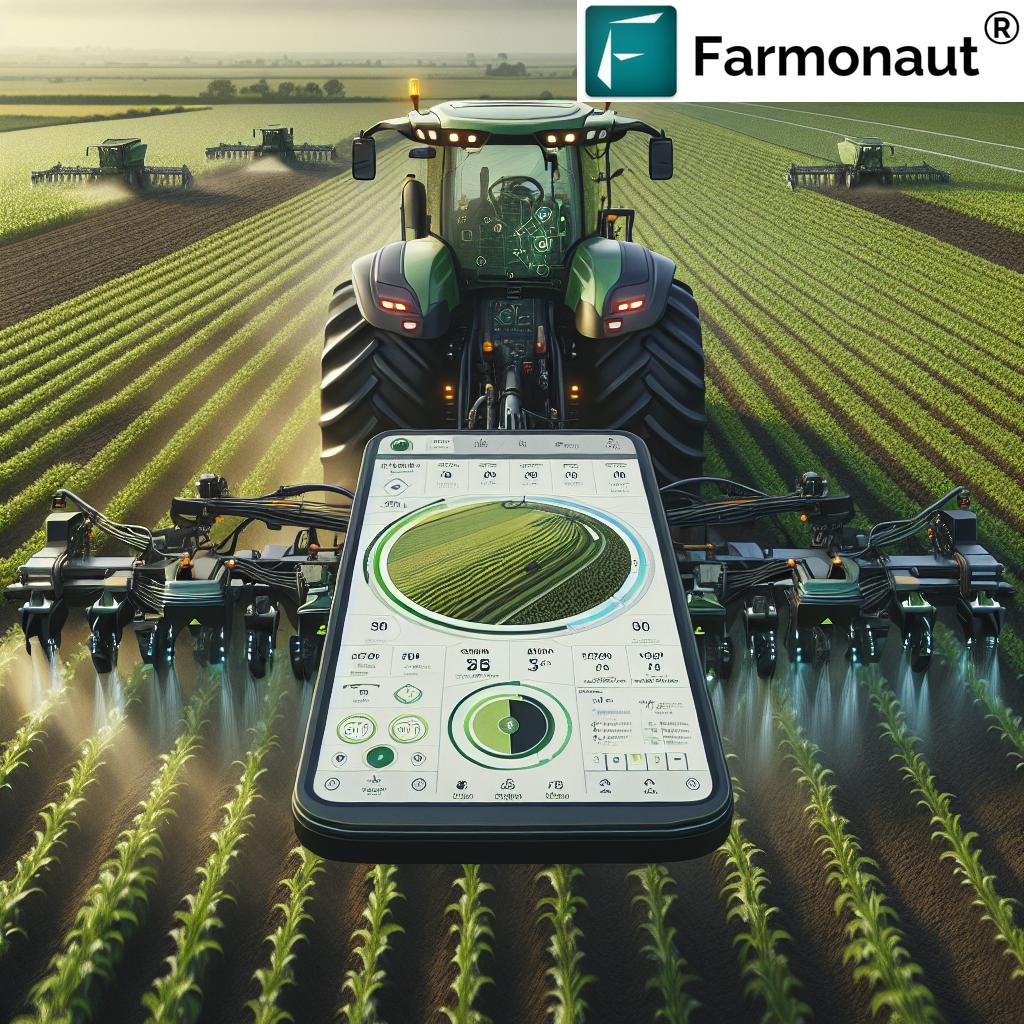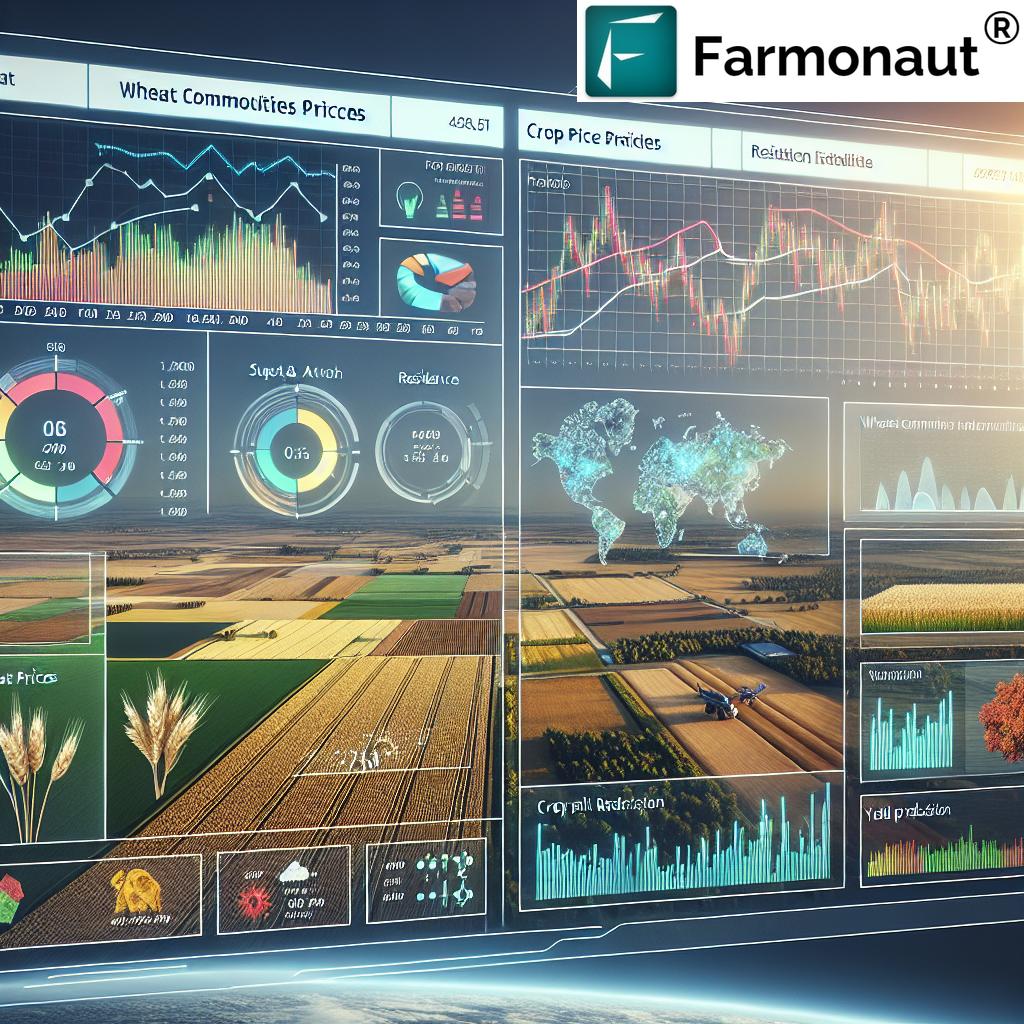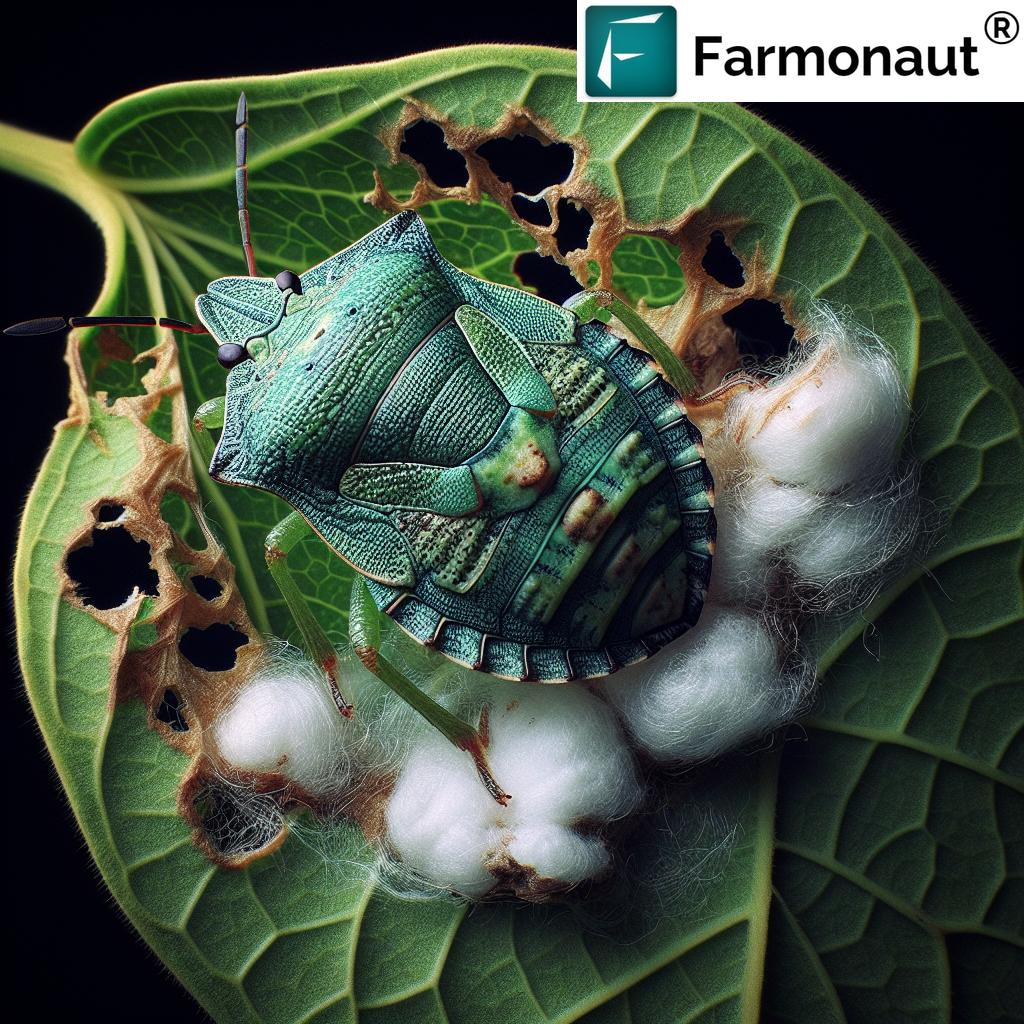Table of Contents
- Introduction: The Global Challenge of Water Scarcity
- Trivia: Precision Irrigation Impact
- 1. Precision Irrigation Systems: Efficient Water Distribution
- 2. Soil Moisture Sensors: Empowering Farmers with Data
- 3. Rainwater Harvesting in Agriculture: Nature’s Gift
- 4. Hydrogel Agriculture: Revolutionizing Soil Water Retention
- 5. Biosaline Agriculture: Cultivating the Unlikely
- 6. Seawater Greenhouse Technology: Freshwater from the Coast
- 7. Smart Irrigation Technology: Integrating IoT and Automation
- Other Innovative Water Scarcity Solutions
- Comparison Table of Sustainable Water Management Solutions
- Farmonaut: Satellite-Based Sustainable Solutions
- Farmonaut Subscription Plans
- FAQ: Sustainable Water Scarcity Solutions
- Conclusion: Securing Our Water Future
“Precision irrigation can reduce water usage in agriculture by up to 50% while maintaining or increasing crop yields.”
Sustainable Solutions to Water Scarcity: 7 Shocking Secrets
Water scarcity is no longer a distant threat—it’s an urgent challenge confronting agriculture, forestry, and our collective food security across the globe. With climate change intensifying, freshwater resources are rapidly diminishing, creating serious hurdles for farmers and entire communities. Did you know that over 70% of global freshwater is used for agriculture, putting immense pressure on existing water supplies? This makes sustainable water management not only vital, but truly imperative for our future.
In this comprehensive article, we will reveal the seven most shocking secrets about sustainable water scarcity solutions—including how precision irrigation systems, innovative moisture sensors, and data-driven technologies are changing the way we farm and manage our natural resources. By adopting these environmentally friendly practices, we can enhance crop yields, conserve water, and foster a more sustainable planet. Let’s explore these secrets together!
1. Precision Irrigation Systems: Efficient Water Distribution
Water is an invaluable resource—and yet, in many regions, traditional irrigation methods still lead to significant water wastage due to over-irrigation and inefficient distribution. Precision irrigation systems deliver water directly to the roots of each plant, minimizing evaporation and runoff. Among these, drip irrigation and sprinkler systems are standout examples, but the true breakthrough comes when we integrate Internet of Things (IoT)—transforming basic irrigation into a “smart irrigation technology.”
- What makes precision irrigation so sustainable?
- Delivers water precisely—only where it is actually needed;
- Reduces water usage by up to 50% without compromising crop yields;
- Minimizes resource wastage and reduces energy inputs due to lower pump run-times.
- By integrating sensors and IoT controllers, we can now monitor soil moisture in real-time. As a result, irrigation schedules can be adjusted automatically based on weather and actual crop water needs. This leads to optimal use of water and enhanced crop productivity.
Far from just a trend, precision irrigation systems are the foundation of sustainable water scarcity solutions. They redefine how farmers manage scarce resources and create measurable benefits for the environment.
Farmonaut’s Satellite-Based Guidance for Sustainable Irrigation
As a leader in precision agriculture, Farmonaut empowers all sizes of farms with real-time crop health data, soil moisture levels, and automated irrigation scheduling. By combining satellite imagery with AI, we enable
- Resource optimization for inputs like water, fertilizers, and energy;
- Lower input costs and higher yields through targeted management;
- Accessibility via web, Android, and iOS apps—learn more here!
2. Soil Moisture Sensors: Empowering Farmers with Data
Our journey toward sustainable water management is incomplete without soil moisture sensors. These advanced sensors monitor soil water content in real-time, offering critical data to help farmers determine optimal irrigation timings and amounts. By doing so, over-irrigation and water waste can be prevented—especially in areas where water scarcity and climate change threaten productivity.
- How does this help?
- Reduces water usage by ensuring irrigation only when the soil actually needs it
- Promotes healthier plant growth and reduces the risk of diseases caused by excessive moisture
- Supports farmers in arid regions with accurate water management, maintaining both productivity and sustainability
By integrating soil moisture sensors with IoT, we can remotely monitor soil moisture, automate irrigation schedules, and respond to environmental changes in real time. This practice is vital for efficient irrigation and is a cornerstone of innovative water scarcity solutions.
Want real-time soil moisture tracking without expensive hardware? Farmonaut’s satellite-based platform delivers soil moisture data directly to your phone or browser! Discover more in our API developer docs.
3. Rainwater Harvesting in Agriculture: Nature’s Gift
When freshwater supplies are limited or erratic, rainwater harvesting in agriculture emerges as a sustainable, nature-powered alternative. This age-old method is now supercharged with modern storage and management systems. Here’s how we make the most of every raindrop:
- Passive harvesting (ponds, swales, and contour bunding) lets us collect water directly in the landscape;
- Active harvesting systems (cisterns, tanks, underground storage) store rainwater for targeted irrigation later in the season.
- Adapting storage capacity allows us to cope with rainfall variations due to climate change.
- Utilizing captured rainwater reduces reliance on conventional water sources, mitigates soil erosion, and supports ecological balance.
Rainwater harvesting is especially vital for arid regions, where every drop counts, and forms a key pillar of sustainable water scarcity solutions.
“Over 70% of global freshwater is used for agriculture, making sustainable water management crucial for food security.”
4. Hydrogel Agriculture: Revolutionizing Soil Water Retention
Another sustainable solution to water scarcity lies in hydrogel agriculture. Here, we use superabsorbent polymers—known as hydrogels—to dramatically boost the soil’s water retention capacity. But how do these hydrogels work?
- They absorb up to hundreds of times their weight in water and release it slowly as the soil dries;
- This reduces the frequency of irrigation and is particularly beneficial in arid or drought-prone regions;
- Hydrogels also improve soil structure and enhance root penetration, which means healthier crop growth.
By integrating hydrogels into the soil, we maintain optimal soil moisture for plant growth with minimal intervention—a game-changer for sustainable and climate-smart agriculture.
5. Biosaline Agriculture: Cultivating the Unlikely
Across many coastal and saline-prone regions, freshwater irrigation is difficult. Biosaline agriculture offers an innovative, resource-saving alternative by empowering us to grow crops with saline water resources. The secret? Halophytes—plants that naturally thrive in high-salt environments.
- Enables food, fodder, and biofuel production on land otherwise considered barren;
- Reduces reliance on freshwater supplies by directly irrigating crops with saline or brackish water resources;
- Helps in sustainable land management and reduces the impact of salinization on agricultural lands.
Adopting biosaline agriculture helps us leverage previously untapped water resources, expanding the possibilities for food security and sustainable agriculture as climate change intensifies.
6. Seawater Greenhouse Technology: Freshwater from the Coast
What if coastal deserts could become food-producing oases? With seawater greenhouse technology, this is now possible. By combining solar energy and seawater, these innovative greenhouses generate freshwater via solar desalination and condensation.
- Seawater is evaporated inside the greenhouse;
- The process creates a cool, humid environment ideal for plant growth—boosting agricultural yields even in arid zones;
- Condensation inside the structure produces fresh, usable water for irrigation and crop hydration.
This unique approach supports sustainable water management in otherwise inhospitable environments, expanding our agricultural frontiers while reducing pressure on traditional water sources.
7. Smart Irrigation Technology: Integrating IoT, Solar, and Automation
In the digital era, smart water irrigation systems represent a major leap toward water-efficient agriculture. These systems integrate IoT devices, sensors, automation, and solar panel support to monitor key metrics—soil moisture, temperature, humidity—and automatically adjust irrigation schedules accordingly.
- Environmental data is collected in real time, enabling precise and timely watering that maximizes both crop productivity and water conservation;
- Solar panels power these systems, reducing reliance on external energy sources and supporting sustainability;
- By reducing labor costs and human error, these systems make sustainable water management scalable even for smallholders.
Automated, sensor-driven irrigation is the heart of data-driven agriculture, ensuring that every drop counts—which is especially vital in water-scarce or climate-vulnerable areas.
Looking to connect advanced sensors and automate field irrigation schedules? Try Farmonaut’s Satellite and Weather Data API today for remote environmental monitoring—a must for every modern farm!
“Over 70% of global freshwater is used for agriculture, making sustainable water management crucial for food security.”
More Innovative Water Scarcity Solutions in Agriculture and Forestry
Beyond the “seven shocking secrets” above, let’s explore other effective water conservation strategies and technologies that are revolutionizing the way we farm and safeguard resources.
Deficit Irrigation: Strategic Water Application for Maximum Productivity
Deficit irrigation is a strategy where we irrigate crops only during their most drought-sensitive growth stages. During less critical periods, limited irrigation is applied or skipped altogether. This method:
- Maximizes water productivity without significant losses to crop yields;
- Requires detailed crop knowledge and careful monitoring of growth phases;
- Is especially useful in regions with strict water limitations as a sustainability measure.
Water-Efficient Irrigation Technologies for Modern Farms
We now have access to micro-sprinkler systems, advanced soil moisture sensors, and real-time data-sharing platforms. These systems can often reduce irrigation water use by up to 50% while enhancing yields and reducing operational costs.
- Data transparency helps farmers adjust schedules with confidence and avoid both over- and under-watering;
- Efficient distribution and monitoring reduces runoff, erosion, and excessive water loss.
Our own carbon footprinting tools help track the positive impacts of these technologies—enabling compliance with environmental targets and contributing towards climate resilience.
Community-Based Water Management: Local, Collective Solutions
Effective water scarcity solutions go beyond individual farms. Community-based water management involves collaboration among local communities, governments, and industries to ensure equitable distribution, conservation, and resilience.
- Engages local communities in monitoring, managing, and protecting water resources;
- Promotes conservation education and equitable access to water supplies;
- Strengthens the ability to adapt to climate change and manage supply variations.
For large projects, data-driven platforms such as Farmonaut’s Large Scale Farm Management Solution are invaluable—providing governments and NGOs with real-time monitoring, automated alerts, and collaborative tools for effective governance.
Comparison Table of Sustainable Water Management Solutions
| Solution/Technology | Description | Estimated Water Savings (%) | Cost Level | Environmental Impact |
|---|---|---|---|---|
| Precision Irrigation (Drip/Sprinkler) | Delivers water directly to plant roots, minimizing evaporation and runoff; adjustable by crop needs | 30–50% | Medium | Reduced runoff, higher water efficiency |
| Soil Moisture Sensors | Real-time monitoring of soil moisture enabling precise irrigation and data-driven schedules | 15–30% | Low–Medium | Reduced over-irrigation, energy savings |
| Rainwater Harvesting | Passive/active collection and storage of rainwater for agricultural use | Up to 50% (in regions relying on harvested rainwater) | Low–High (scalable) | Reduced freshwater extraction, mitigated soil erosion |
| Hydrogel Agriculture | Superabsorbent polymers increase soil water retention and gradually release it to crops | 20–40% | Medium | Improved soil structure, reduced irrigation frequency |
| Biosaline Agriculture | Cultivation of salt-tolerant plants (halophytes) using saline water resources | N/A (uses non-traditional water) | Medium | Reduces pressure on freshwater sources |
| Seawater Greenhouse Technology | Solar-powered greenhouses desalinate seawater for irrigation and climate control | Depends on region (can provide 100% of irrigation needs in some sites) | High | Uses renewable energy, coastal sustainability |
| Smart Irrigation (IoT-Integrated) | Automated irrigation system using IoT, sensors, and solar energy for real-time adjustments | 30–60% | Medium–High | Optimized water use, energy and labor savings |
| Deficit Irrigation | Applying water during drought-sensitive stages, withholding during tolerant periods | 20–40% | Low | Maximized water productivity |
| Community-Based Water Management | Collaborative, equitable water management involving all stakeholders | Highly variable | Low–Medium | Greater resilience, long-term sustainability |
Farmonaut: Satellite-Based Sustainable Solutions
At Farmonaut, we’re driven by a mission: making precision agriculture and sustainable water management accessible to everyone—from solo farmers to vast agribusinesses and government institutions. Here’s how we’re meeting the global challenge of water scarcity with technology and innovation:
- Satellite-Based Monitoring:
- Get NDVI-based crop health maps, soil moisture levels, and water stress data seamlessly—access our app today.
- AI-Driven Advisory:
- Jeevn AI analyzes weather, crop, and soil data to deliver timely irrigation and resource management recommendations—maximizing productivity while reducing environmental impact.
- Blockchain Traceability:
- Enhance transparency and security across the food supply chain thanks to our product traceability platform—perfect for growers, processors, and retailers aiming for true accountability.
- Resource, Fleet & Plantation Management:
- Optimize agriculture fleets, manage plantations, and monitor forestry operations with ease—explore fleet management solutions and crop & forestry advisory tailored for your region.
- Carbon Footprinting & Environmental Compliance:
- Track emissions, reduce your farm’s carbon footprint, and align sustainability metrics using Farmonaut’s carbon tracking tools. This empowers climate-smart agriculture initiatives for producers, companies, and policymakers.
- Integrations & APIs:
- Developers can integrate satellite and weather data with existing farm systems via our robust API—perfect for large-scale deployments and custom integrations.
From affordable subscriptions for individual fields to custom plans for enterprises, Farmonaut’s platform offers scalable, modular, and sustainable solutions for all stakeholders.
Farmonaut Subscription Plans
FAQ: Sustainable Water Scarcity Solutions
What are the most effective water scarcity solutions for smallholder farmers?
Many smallholder farmers can reduce water wastage and boost yields by implementing precision irrigation systems, using soil moisture sensors, and adopting rainwater harvesting in agriculture. Affordable, satellite-driven platforms such as Farmonaut’s make it easy to monitor and manage irrigation with minimal upfront investment.
How does precision irrigation contribute to sustainable water management?
Precision irrigation ensures water is applied only where and when needed, minimizing waste and maximizing resource efficiency. Automated systems using IoT and real-time data can reduce water consumption by up to 50% while supporting consistent crop growth.
What role does technology play in rainwater harvesting in agriculture?
New technologies allow us to monitor rainfall, optimize storage, and automate usage of rainwater in the field—maximizing the benefit of every drop and reducing dependence on increasingly scarce freshwater sources.
Can biosaline agriculture be practiced everywhere?
Biosaline agriculture is most effective in coastal or saline-prone regions where salt-tolerant (halophyte) crops can thrive. It opens up new frontiers for food and biofuel production while reducing pressure on limited freshwater supplies.
How do smart irrigation systems leverage IoT and solar energy?
Smart irrigation systems collect real-time data from environmental sensors and automate irrigation based on actual crop needs. When powered by solar panels, they further reduce environmental impact and energy costs—especially in off-grid and remote areas.
Are these sustainable water management solutions expensive to implement?
The cost varies by solution and scale. Simple rainwater harvesting and soil sensor integrations are typically affordable, while advanced seawater greenhouses and large-scale IoT systems might require higher upfront investments. However, the long-term water and input savings almost always deliver positive returns.
Conclusion: Securing Our Water Future
As water scarcity and climate change reshape the world, our adoption of sustainable water management solutions is more crucial than ever. Through precision irrigation systems, soil moisture sensors, rainwater harvesting in agriculture, and cutting-edge smart irrigation technology, we can transform our approach to agriculture and forestry—preserving vital freshwater resources for generations to come.
Let’s join together—farmers, agribusinesses, policymakers, and communities—to embrace innovative strategies and proven solutions. By integrating technology, data, and traditional practices, we can build a more resilient and food-secure future for all.
Explore Farmonaut today for real-time agricultural intelligence, soil health monitoring, and eco-friendly management tools—and be a part of the solution to global water scarcity!


